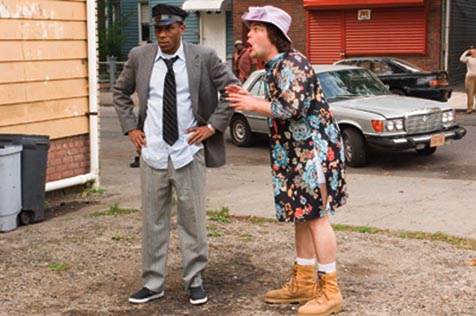Be Kind Rewind
Jack Black, Mos Def, and Danny Glover star in a film written and directed by Michel Gondry.

As Michel Gondry films go, Be Kind Rewind is relatively tied to the straight and narrow, at least in terms of a linear storyline that could actually happen in real life. Okay, the plausibility factor still skates on the farther edges, with its unlikely erector-set production and left-of-center imaginings. This time around, Gondry’s creation involves blending true and false tales about jazz pioneer Fats Waller (a rare filmic focus on a jazz icon, like Benny Golson in Terminal), a loony and magnetized Jack Black rescuing a Passaic, New Jersey, video store from gentrification, and a film production company on the super cheap. Danny Glover and Mia Farrow show up for the fun and it’s all, or at least mostly all, good.
In his deliciously mind-bending earlier films Eternal Sunshine of the Spotless Mind (aided by screenwriter Charlie Kaufman’s warped brain) and The Science of Sleep, the inventive Gondry brought to the feature film arena a wild, sweet new voice. He loves to tinker with time and dream states, and he doesn’t sweat the small stuff of continuity, often in the larger pursuit of some magical new storytelling model. That ambition continues with his new one, if on a more modest and more spottily successful scale.
For one thing, the scenario of this film naturally perpetuates Gondry’s fascination with mixing crisp Hollywood movie-making values with low-tech, low-fi means. Black and Mos Def play cohorts with a cause. After Black’s accidental magnetization results in a video store full of blanks, the duo are forced to make their own cheapo versions of such movies as Ghostbusters and Rush Hour 2. These mock movies-held together with spit and glue, cardboard and aluminum foil-become a hit around the neighborhood, especially the versions that have been “Sweded” (long story).
Take away the surreal and child-like touches of Gondry’s creative style, and we have here a post-post-modern variation on the Busby Berkeley-era musical genre, in which loose story-within-a-story plotlines often involved putting on a musical to save the shop and the day. But mostly, Gondry continues tending his own idiosyncratically creative, funky corner of the cinematic sandbox.



